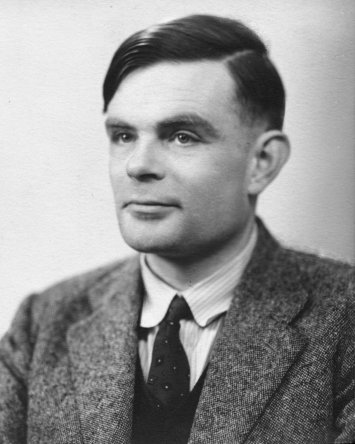Turing’s enduring importance
March 29, 2012 | Source: Technology Review
Alan Turing’s work made clear to the designers of early electronic computers that calculating machines didn’t need a huge inventory of fancy instructions or operations—all they needed were a few registers that were always available (the “state of mind”) and a memory store that could hold both data and code.*
The designers could proceed in the mathematical certainty that the machines they were building would be capable of solving any problem the humans could program.
These insights provided the mathematical formulation for today’s digital computers, though it was John von Neumann who took up Turing’s ideas and is credited with the machines’ design.
Von Neumann’s design had a central core that fetched both instructions and data from memory, performed mathematical operations, stored the results, and then repeated. The machine could also query the contents of multiple locations in memory as necessary. What we now call the von Neumann architecture is at the heart of every microprocessor and mainframe on the planet.
Many histories of computing give the impression that it was a straightforward set of engineering decisions to use punch cards, then relays, then tubes, and finally transistors to build computing machines. But it wasn’t. General-purpose machines required Turing’s fundamental insight that data and code can be represented the same way.
And keep in mind that all of today’s computers were developed with the help of slower computers, which in turn were designed with slower computers still. If Turing had not made his discovery when he did, the computer revolution might have been delayed by decades.
* Erratum: Jürgen Schmidhuber, Director of the Swiss Artificial Intelligence Lab IDSIA (since 1995), Professor of Artificial Intelligence at the University of Lugano, Switzerland, and Professor at The University of Applied Sciences and Arts of Southern Switzerland (SUPSI) states in Nature 429, 501 (03 June 2004);doi:10.1038/429501c:
“Although Turing, a hero of mine, certainly was one of the greatest, we should keep in mind that his paper essentially just elegantly rephrased Kurt Gödel’s 1931 results and Alonzo Church’s extension thereof. It did not have any impact on the construction of the first working program-controlled computer. That was made in Berlin by Konrad Zuse in 1935-1941 and was driven by practical considerations, not theoretical ones.”
Also see: Turing: Keep his work in perspective. Jürgen Schmidhuber, Nature 483, Page 541 (29 March 2012) DOI:doi:10.1038/483541b, http://www.nature.com/nature/journal/v483/n7391/full/483541b.html
— Ed.
